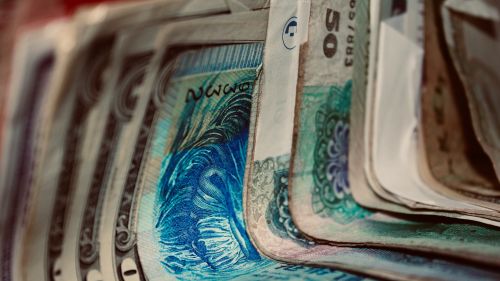Does the Future of the WTO Hang in the Balance in Ottawa?

For decades, the United States has been the driving force pushing for new rules to govern world trade. What if the other major countries of the world assumed that mantle in our absence? It’s happening.
Ottawa and the WTO
This week in Ottawa, the Canadians are hosting a gathering of thirteen countries to try to save the World Trade Organization. Of particular note, however, is that the participants do not include the two largest economies and biggest trading countries in the world, the United States and China.
But what’s wrong with the WTO? First, since President Trump took office, the United States has blocked the appointment of judges to the dispute settlement body, accusing the mechanism of judicial overreach, a move that could bring dispute litigation to a standstill. Likewise, the Trump administration’s concern regarding Chinese subsidies and government intervention, as well as intellectual property theft, has led to hundreds of billions of dollars of tariff measures for both China and the United States, a development the WTO was created to avoid.
While some of these concerns are shared by the thirteen in Ottawa, there is skepticism as to what these countries can accomplish to assuage US concerns regarding the multilateral body. If true reform is to be had, is it not necessary to include the world’s commercial titans? There are two reasons for optimism: share of global GDP and share of global trade flows.
The thirteen participating countries make up approximately 40 percent of global gross domestic product (GDP). That is more than China and the United States combined (Table 1). Although the WTO is a consensus-driven body, this critical mass may be instrumental in that it covers a large enough portion of the global economy, represents each continent, and includes non-OECD countries. Moreover, the fact that 11 of the world’s top 15 economies are at the table creates a political front that is more powerful than simple GDP figures.1
Table 1
Gross Domestic Product by Country (2017)2
| Country | Total GDP (in millions USD) | % of total global GDP | Global rank by country |
|---|---|---|---|
| Total % of global GDP | 39.4% | ||
| European Union | $17,277,698 | 21.4% | N/A |
| Japan | $4,872,137 | 6.0% | 3 |
| Brazil | $2,055,506 | 2.5% | 8 |
| Canada | $1,653,043 | 2.0% | 10 |
| South Korea | $1,230,751 | 1.9% | 12 |
| Australia | $1,323,421 | 1.6% | 13 |
| Mexico | $1,149,919 | 1.4% | 15 |
| Switzerland | $678,887 | 0.8% | 20 |
| Norway | $398,832 | 0.5% | 28 |
| Singapore | $323,907 | 0.4% | 36 |
| Chile | $277,076 | 0.3% | 41 |
| New Zealand | $205,853 | 0.3% | 50 |
| Kenya | $74,938 | 0.1% | 68 |
| United States | $19,390,604 | 24.0% | 1 |
| China | $12,237,700 | 15.2% | 2 |
But raw GDP figures tell only part of the story. This collection of countries also trades heavily, accounting for 40% of total global merchandise and commercial trade, while the United States and China together account for a far smaller percentage (approximately 28% percent, see Table 2). Importantly, this grouping collectively forms a larger bloc for the formation of trade policy than the outright size of their economies would suggest.
Table 2
Total Merchandise and Commercial Trade Flows by Country (2017)3
| Country | Total trade (in billions USD) | % of total global trade flows |
|---|---|---|
| Total % of global trade | 40.0% | |
| European Union | $6,028 | 16.7% |
| Japan | $1,739 | 4.8% |
| South Korea | $1,258 | 3.5% |
| Canada | $1,054 | 2.9% |
| Singapore | $1,036 | 2.9% |
| Mexico | $905 | 2.5% |
| Switzerland | $789 | 2.2% |
| Australia | $591 | 1.6% |
| Brazil | $475 | 1.3% |
| Norway | $271 | 0.8% |
| Chile | $156 | 0.4% |
| New Zealand | $107 | 0.3% |
| Kenya | $30 | 0.1% |
| United States | $5,235 | 14.5% |
| China | $4,795 | 13.3% |
The tightrope the thirteen countries must walk is to find solutions to coax the United States back from the brink to support multilateralism again, while simultaneously not pushing China into a corner.
There is precedent for this type of a convening. During the Uruguay Round of negotiations for the formation of the WTO, the oft influential "Quad" grouping of countries, which included the United States, the European Union, Japan, and Canada, achieved a breakthrough in discussions of market access. The thinking was that if the largest and most influential countries could come to agreement, it would be easier to move trade discussions forward. In the end, this effort was instrumental to the formation of the WTO.
This convening in Canada does not deviate far from this historical legacy, as a small group of "like-minded" countries that represent an out-sized amount of global GDP and trade flows are focusing on how to bring the WTO through its current maelstrom.
In the end, the United States and China cannot be avoided. But finding constructive solutions to solve the issues within the WTO is vital for the future of the organization. Its survival may depend on it.
- 1
The European Union includes member states Germany, the United Kingdom, France, Italy, and Spain, all of which are in the 15 largest economies measured by GDP.
- 2
- 3
World Trade Organization; (Data for Kenya). The total trade flows include the sum of merchandise imports and exports, and commercial imports and exports.

